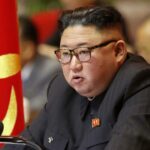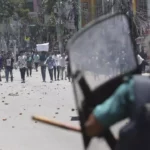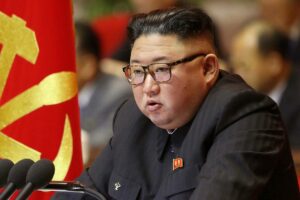The second half of May saw the worst violence in the Pamir Mountain region of Tajikistan since the end of the civil war in 1997. At least 40 people have been killed and over 200 arrested in the central government’s attempt to assert full control over this rugged eastern territory (Bomdod, May 24). The most recent cycle of violence began on May 16, when locals in Khorog gathered to call for several law enforcement officers to be brought to justice for allegedly killing local youth leader Gulbiddin Ziyobekov on November 25 (Radio Ozodi, May 16, 2022; CABAR.asia, December 7, 2021). His death sparked protests in November in Khorog resulting in 2 fatalities and 17 injuries (Asia Plus, November 25). Since then, a tense standoff prevailed between the government and the local Pamiri population over the incident. Law enforcement used tear gas and snipers to break up the May 16 protests and quickly cut off the region’s internet connection (Radio Ozodi, May 16). When the authorities decided to send additional military forces to quell the unrest on May 17, residents blocked the road from Dushanbe to Khorog in Rushan. In response, the government launched a “counter-terrorism” operation, killing dozens and arresting hundreds (see EDM, May 24).
The Pamir region, known officially as Viloyati Mukhtori Kŭhistoni Badakhshon (Gorno-Badakhshan Autonomous Province), makes up almost half of Tajikistan’s territory, although this geographically remote area is home to only 3 percent of its population. The majority of the local population are Shia Ismailis, setting them apart from the Sunni Hanafi majority in the rest of the country, and their languages differ from Tajik. The area was designated an autonomous region (oblast) by the Soviet Union, a status it retained after independence. The government has framed the latest wave of unrest as a Western-backed attempt to destabilize the country. In a film shown on state TV shortly after the latest violence, human rights activist Ulfathonim Mamadshoeva and former border guard general Kholbash Kholbashov confess to being behind the events, in collaboration with local leader Mahmadboqir Mahmadboqirov and exiled opposition activist Alim Sherzamonov. The video claims they were backed by unnamed “Western governments” (Radio Ozodi, May 29).
But in reality the government has long sought to take full control of the region, and its efforts toward this end—rather than the purported activities of “terrorists,” “organized criminal groups” or “separatists,” as the government claims—have contributed most to driving the violence (Jumhuriyat, May 19; see EDM, May 24). The central government has been struggling for decades to bring the region to heel. In 2012, it launched a military operation to remove informal leaders after former border guard commander Tolib Ayombekov killed the local head of the security services, Major General Abdullo Nazarov (see EDM, July 27, 2012). Violence also broke out between the government and the local population in 2014 and 2018 (Asia Plus, May 27, 2014; EurasiaNet, November 6, 2018). Despite these efforts, the central authorities never had full control of the region, with local informal leaders holding greater sway in their communities.
As with previous incidents of violence in the country, such as the alleged coup attempt in 2015, which the government used to finally eliminate the opposition Islamic Renaissance Party, in the midst of the recent turmoil the government is neutralizing the informal leaders and other independent activists from the Pamirs. Most importantly, on May 22 the government killed Mahmadboqirov, the local informal leader they had blamed for the recent unrest (Jumhuriyat, May 23). The authorities have also detained 13 members of Group 44, a coalition of local activists who formed to investigate the November events and negotiate with Dushanbe (Radio Ozodi, May 30). The crackdown has extended beyond the country’s Pamiri minority. Days after the violence, relatives of the former leader of the now-banned Islamic Renaissance Party, Said Abdullo Nuri, were sentenced for receiving “illegal funds from abroad” (Radio Ozodi, May 28).
The Pamir Mountain region matters to the central government for a number of reasons. It contains the only border crossing with neighboring China, the country’s largest trade partner and creditor, as well as a lengthy border with Afghanistan, from where narcotics and precious stones are smuggled. Gorno-Badakhshan also contains important mineral deposits. Finally, it is the last area of the country the central government has failed to subordinate to itself. President Emomali Rahmon, who has ruled this Central Asian state since 1992, is reportedly looking to hand power to his son Rustam (EurasiaNet, April 17, 2020). Before he becomes president, Rustam Rahmon presumably wants to be in full control of the country and its lucrative trade and transit routes.
What sets the latest round of violence apart from previous unrest in the Pamirs is the blaming of Western powers for driving the events. Western countries have donated hundreds of millions of dollars to support Tajikistan’s security sector over the past three decades, motivated primarily by concerns over spillovers of radicalism and illicit commodities across the country’s 843-mile border with Afghanistan. The United States government alone has given $364 million in security assistance to Tajikistan since 2000 (Securityassistance.org, accessed May 31, 2022). It has allocated an additional $60 million over the next two years, including $20 million worth of Puma drones and a new border post to house 900 personnel (24.kg, May 12). The European Union has spent 68 million euros ($72 million) on its Border Management Program in Central Asia since 2003 (Astana Times, September 18, 2020).
Despite this support, as Tajikistan leans increasingly on China and Russia for patronage, the Tajikistani government is scapegoating the West for the violence its own policies have helped create or amplify. The central government looks determined to fully assert control over the Pamir region, the last stage in the consolidation of Rahmon’s autocratic regime. But by detaining, killing and torturing Pamiri civilians who were calling for greater accountability from their government, the state’s repressive tactics will likely generate more grievances that further fuel the conflict.
Source: Анҷумани озодандешони тоҷик















